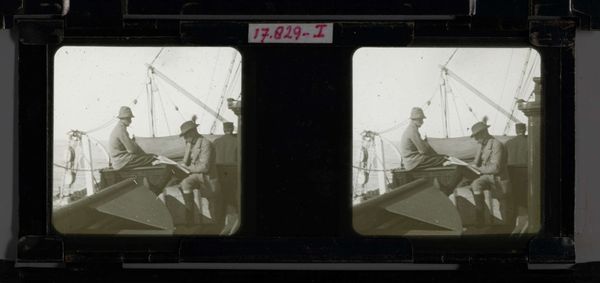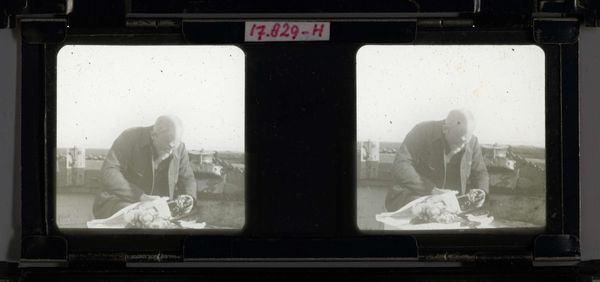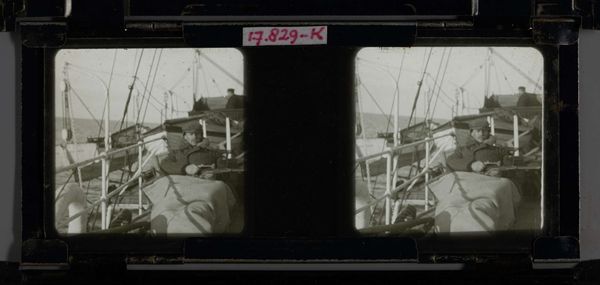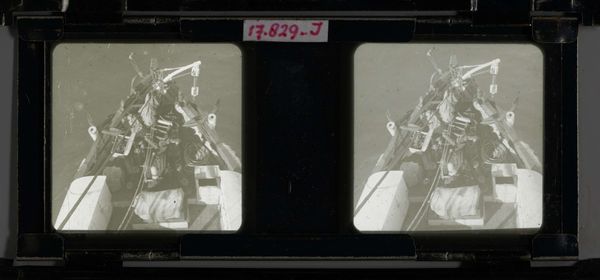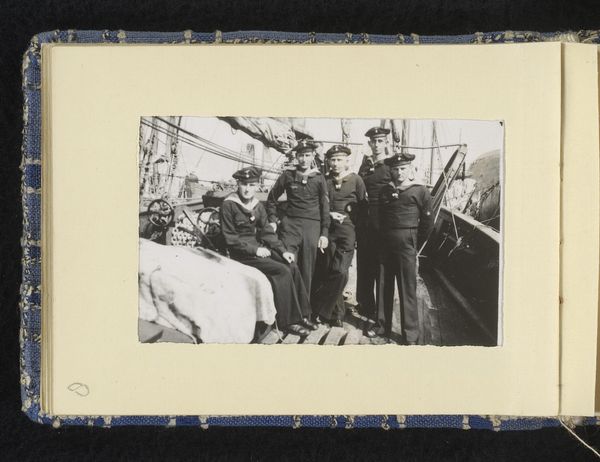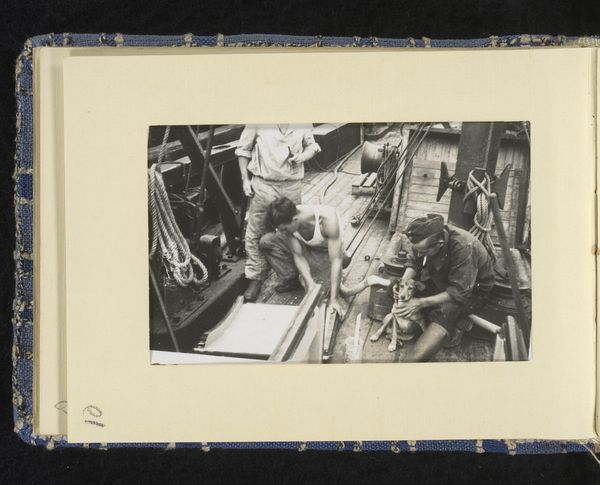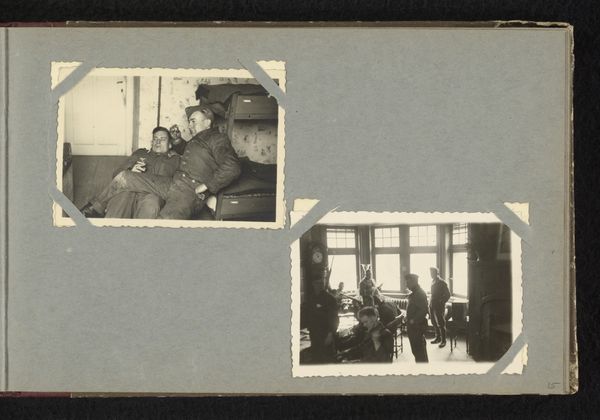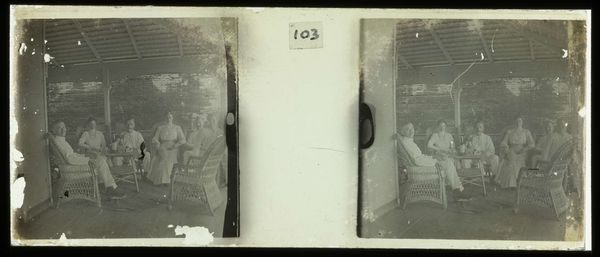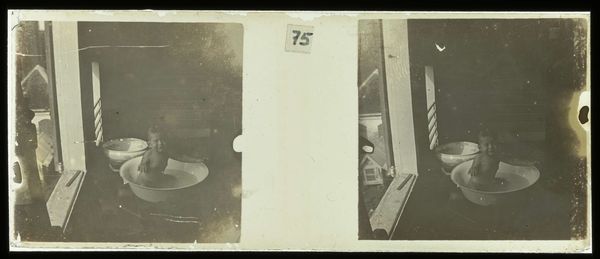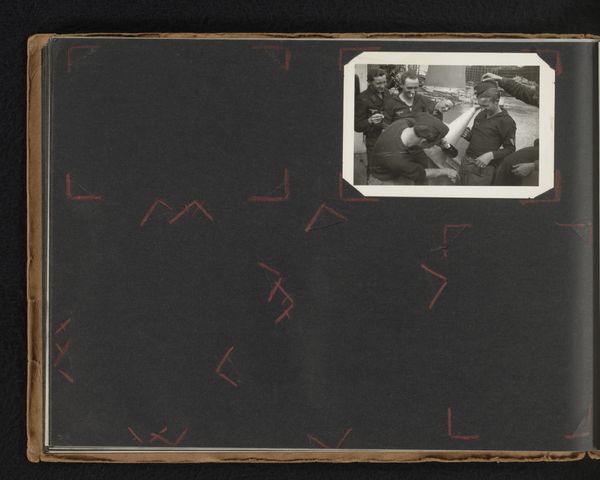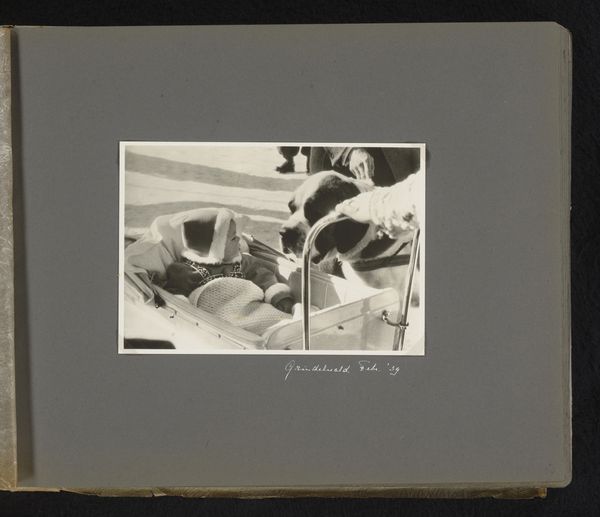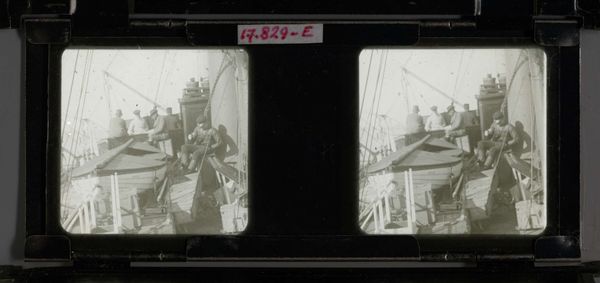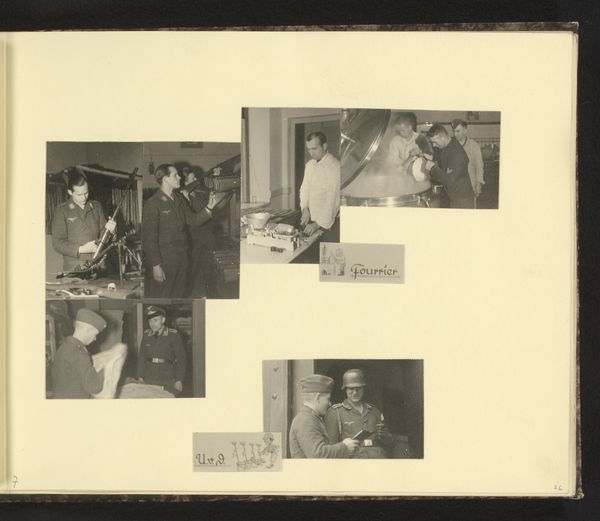
photography
#
street-photography
#
photography
#
street photography
#
genre-painting
#
realism
Dimensions: height 45 mm, width 105 mm
Copyright: Rijks Museum: Open Domain
Curator: Today we're looking at an early photograph entitled "Mannen maken huiden schoon op het dek van een schip," placing us sometime between 1893 and 1923. Editor: My first thought is the stark realism—the rough, functional deck of the ship, the labor. There's a clear focus on documenting the labor involved rather than any romanticization. Curator: Exactly. It's a slice of life, highlighting working-class labor within a specific historical context. Note how the men are positioned; they appear anonymous, part of a larger industrial machine, reflecting early 20th-century working conditions and photographic style. Editor: You can almost feel the dampness of the deck and the chill in the air, emphasizing the laborious, almost mundane process of preparing animal hides. It challenges the traditional hierarchy between art and craft by focusing on labor and materials. The processing of skins to become usable resources - quite a transformation. Curator: This photograph tells us a lot about labor, commerce, and societal values of that era, particularly within maritime contexts. Who would be seeing the photo, and why? Was it commissioned by the ship or by merchants trading in skin or hide? These details open the image to larger dialogues about power and social relations. Editor: Looking at the details, I think it is worth noting that in those times processing and cleaning the hides was quite different, and that processing had strong impact in people and resources that depended on them. It feels important to highlight what wasn't considered or documented from a wider picture in its day. Curator: True, this is why it's so important for the viewer to consider social context in photographic works. What are we seeing, but also what might we be missing? The photograph becomes more than a document, but an opening to an enquiry. Editor: Absolutely. Images of labor serve not just as records, but as silent critiques or endorsements of prevailing systems. I leave it feeling reflective and hoping to ask new questions to the viewers. Curator: And with further consideration of images such as these, hopefully they will too. Thank you.
Comments
No comments
Be the first to comment and join the conversation on the ultimate creative platform.
